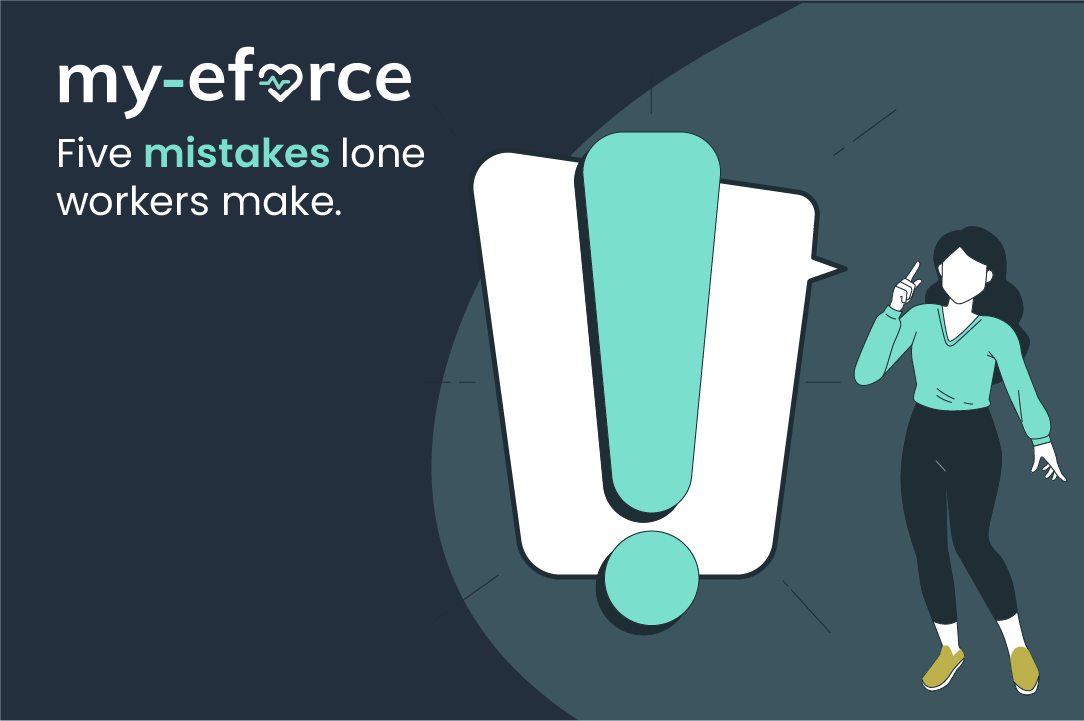
For lone workers, danger doesn’t always show up loudly. It’s often quiet, creeping in through routine tasks, overlooked habits or a false sense of safety. Whether you’re in real estate, construction, healthcare or remote fieldwork, working alone means facing risks without a safety net - unless you build one.
Here are five of the most common (and avoidable) mistakes lone workers make, and how you can stay one step ahead of trouble.
Failing to check in is one of the biggest gaps in lone worker safety. Whether it’s because you're “just popping in quickly” or you think someone already knows where you are, skipping check-ins leaves you invisible in an emergency.
Avoid it: Use tools like my-eforce’s SafetyTimer®, which automatically alerts support if you don’t cancel the timer by a set time. It’s backup you don’t have to think about.
Wet floors, faulty stairwells, bad lighting and unsecured structures don’t always look dangerous - until they are. Lone workers often walk into unfamiliar environments without knowing what to look for.
Avoid it: Always do a visual sweep of your surroundings and follow workplace safety protocols. Trust your instincts and if something feels off, don’t ignore it.
Music or podcasts can make solo work feel less lonely, but full audio immersion is risky. Earbuds block out cues like footsteps, alarms or even someone calling for help.
Avoid it: If you must wear earbuds, keep one ear open - or better yet, don’t wear them at all during tasks that require spatial awareness.
When emergencies strike, seconds matter. Digging through your bag or fumbling to unlock your phone wastes precious time - especially if you're panicked.
Avoid it: my-eforce is a quick tap on your smartwatch, and also offers lock-screen SOS with Live Activity and hands-free emergency support. That means help is just a tap away - even if you can’t speak.
The most dangerous mindset? Assuming you're not at risk. Many lone workers don't realise how vulnerable they are until something happens. And by then, it’s too late to prepare.
Avoid it: Be proactive. Equip yourself with the right tools, stay aware and treat every solo task with the seriousness it deserves.
Lone worker safety isn’t about fear; it’s about readiness. With the right tools and awareness, you can face each day with confidence, knowing you’re protected.
my-eforce is designed to be that protection: discreet, powerful and always by your side.

